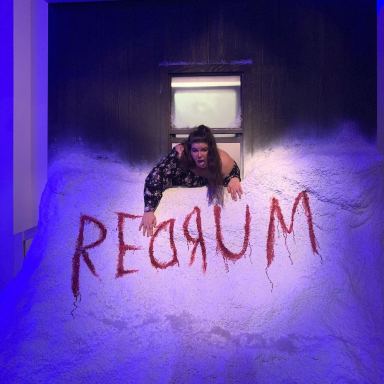16 Trivia Facts About ‘The Texas Chainsaw Massacre’ (1974)
Stephen King wrote, “I would happily testify to its redeeming social merit in any court in the country.”

Released in October 1974, Tobe Hooper’s The Texas Chainsaw Massacre was one of the first slasher movies to gain popular recognition, and it started a slasher-movie craze that would define horror films in the 80s.

The film begins with a title card saying the movie is based on a true story. Famously, Texas Chainsaw Massacre is not in any way “based” on a true story, though some inspiration for Leatherface’s character comes from a real-life killer named Ed Gein. Gein made clothing and other household wares from taxidermied human remains, but every other detail in the movie is fictional.
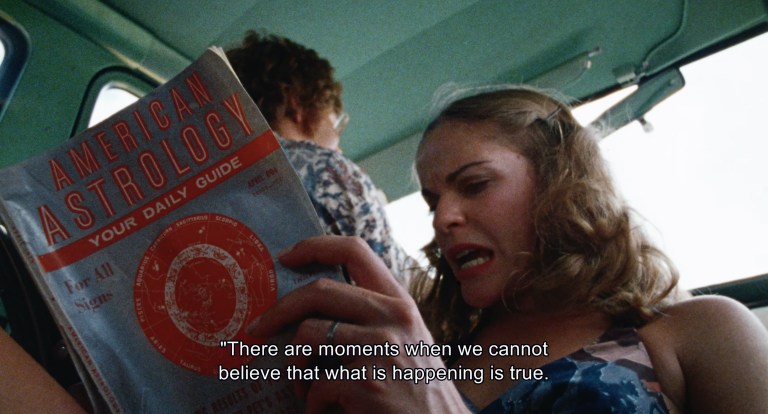
Here are the most interesting fun facts, trivia, and lore on Texas Chainsaw history.
The Texas Chainsaw Massacre origin story

1. Tobe Hooper got the idea for a villain wielding a chainsaw when he was Christmas shopping at a Montgomery Ward department store. Raised by parents who owned a movie theater, he had already decided that he wanted to make movies. Tobe saw George A. Romero’s Night of the Living Dead in 1968 and fell in love with the way Romero created a genuinely scary and politically conscious story. Back at the department store, Christmas crowds overwhelmed Tobe as he stood near a stack of chainsaws. He had a misanthropic fantasy about firing one of them up and using it to cut his way to freedom through the crowd. Immediately, he felt this was the idea that would become his big movie.
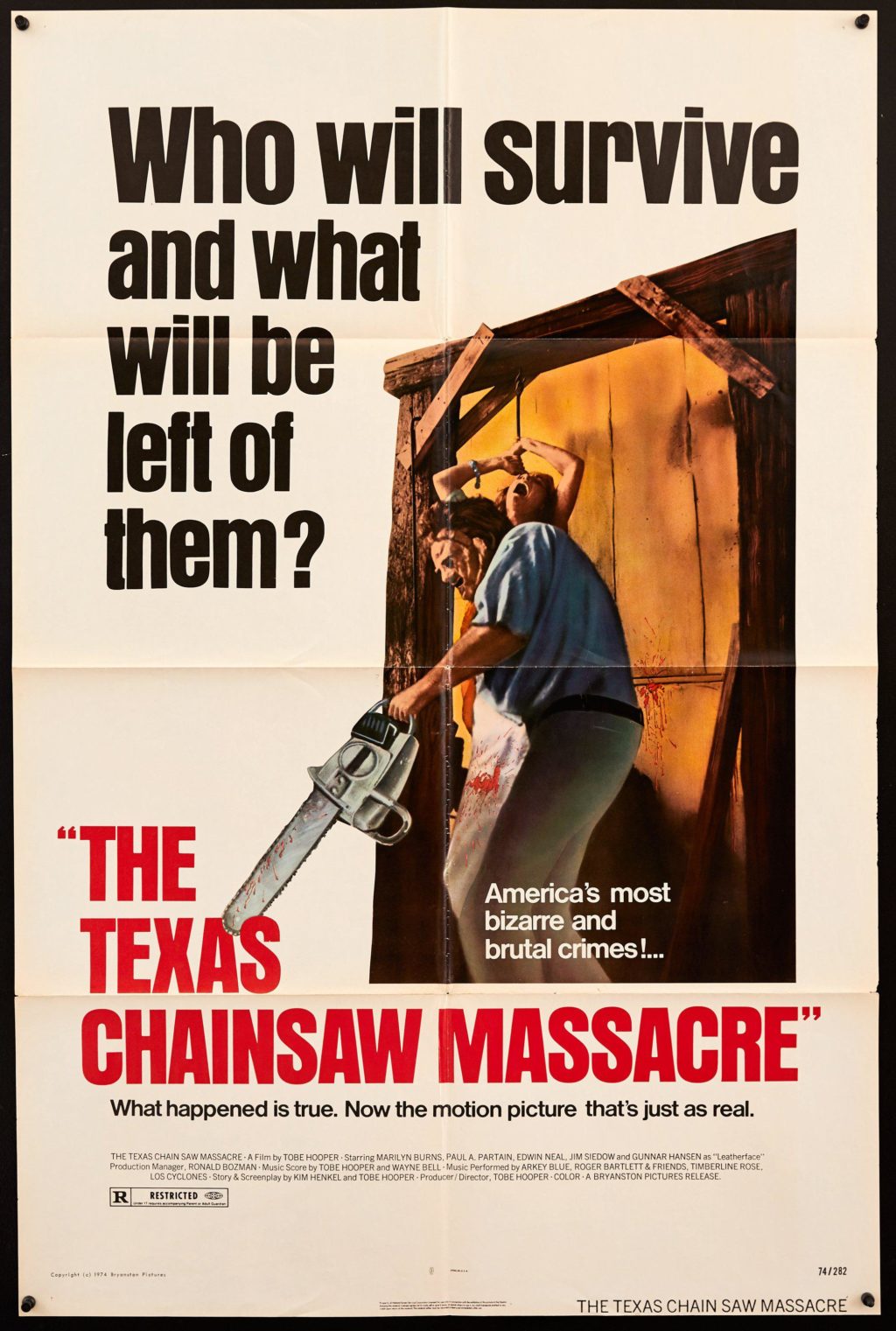
2. Leatherface was the first horror-movie villain to use machinery as a weapon. This would become commonplace in horror.
3. Cowriter Kim Henkel says he was inspired by a series of local murders while writing the script: “I saw some news report where Elmer Wayne [Henley] … said, ‘I did these crimes, and I’m gonna stand up and take it like a man.’ Well, that struck me as interesting, that he had this conventional morality at that point. He wanted it known that, now that he was caught, he would do the right thing. So this kind of moral schizophrenia is something I tried to build into the characters.”
4. Texas Chainsaw Massacre (1974) was made on a budget of $140,000. All the actors hired were unknown, and most of them were local. Production of the movie sounds like literal hell. Because of the low budget, the cast and crew sometimes filmed seven days a week, up to 16 hours per day. They worked primarily in an old Texas farmhouse with no air-conditioning in heat that was over 100 degrees. The floor was littered with real decaying cattle carcasses the art director found at neighboring farms. Their costumes became covered in fake and real blood and could not be washed for fear of creating continuity errors, so the actors wore them day after day. The 20 cast and crew members were paid almost nothing, splitting only the $8,100 that was left after the movie was sold to a distribution company. Tobe said it took years for the cast and crew to forgive him for the miserable working conditions and poor pay.
5. Years later, the cast and crew got an additional $25,000 each after filing a lawsuit when they discovered that the company distributing the film was owned by the Mafia, who had used it to launder profits from the porn film Deep Throat (1972).
“Filming that scene was the worst time of my life . . . and I had been in Vietnam, with people trying to kill me, so I guess that shows how bad it was.”
Edwin Neal, who played the hitchhiker, on the terrible working conditions while filming the dinner party scene
6. The actor who voiced the film’s opening narration, John Larroquette, says he was paid one joint for his work.
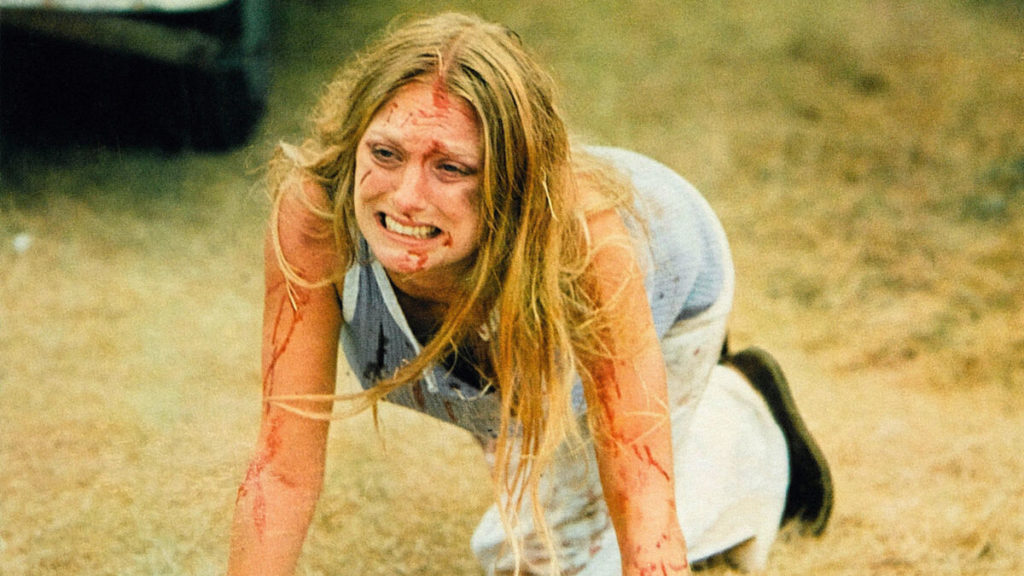
7. Marilyn Burns convinced herfriend Gunnar Hansen to take on the role of Leatherface. Originally, Hansen said he thought the movie was too violent. He wore three-inch lifts in his shoes to make Leatherface a hulking 6’7″ figure.
8. Tobe Hooper hoped he could get a PG rating for the 1974 original. The MPAA gave it an X. After some scenes were cut, they lowered the rating, and it was released with an R. Some countries banned the movie because it was so violent. While many critics didn’t like the movie and thought it was just pointless violence, others saw Tobe Hooper’s artistry, even comparing the film to a Greek tragedy. Stephen King wrote, “I would happily testify to its redeeming social merit in any court in the country.”
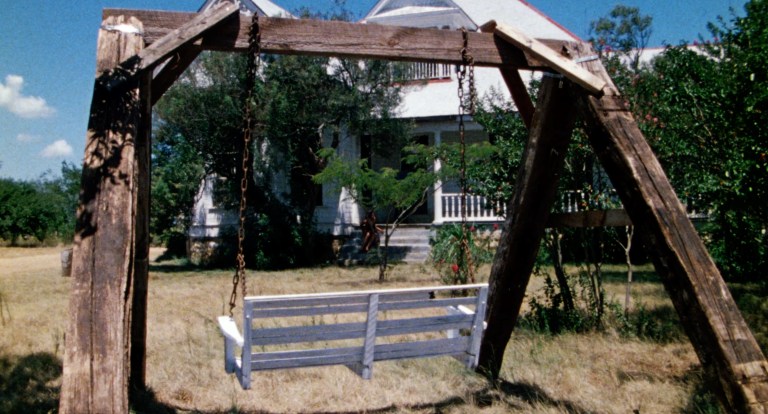
9. Audiences didn’t care about the rating or the fact that some countries thought it was too gruesome to distribute. The movie was a big commercial success, selling 16.5 million tickets and earning $30 million at the box office.
The Texas Chainsaw Massacre: “based on a true story”
10. Marketing for the movie heavily relied on the premise that The Texas Chainsaw Massacre was “based on a true story.” This was not true. Tobe says he was inspired to lie about the movie’s origin as a result of feeling lied to by the U.S. government about recent affairs such as the Vietnam War and Watergate. He also wanted a real human being to be the villain of his movie, just like humans are the real villains behind the gruesome images he saw of Vietnam. Leatherface wears a “man mask” showing the audience that all this brutality is literally “manmade.”

11. Inspiration for TCM was taken from the real life of a man named Ed Gein who lived in Plainfield, WI until 1968 when he was sent to a psychiatric hospital. Gein killed two women, but he can more accurately be described as “mentally unwell” and dangerous than as a sadistic slasher movie killer. He was also a prolific grave robber who used human bones and skin to decorate his home. When his home was searched, police found objects made from vulvas, nipples, skulls, lips, and several “face masks.” Gein said he was influenced by pulp crime magazines and footage of Nazi atrocities committed during World War II.
Political themes and influence
12. Like many iconic horror movies, TCM makes viewers question the nature of the civilization we all play varied roles in creating and upholding. At the beginning of the film, the group drives by a slaughterhouse and Franklin describes the gruesome process by which cows are killed for meat. The words he uses turn out to be a prophetic description of what will happen to his sister Sally that very evening.
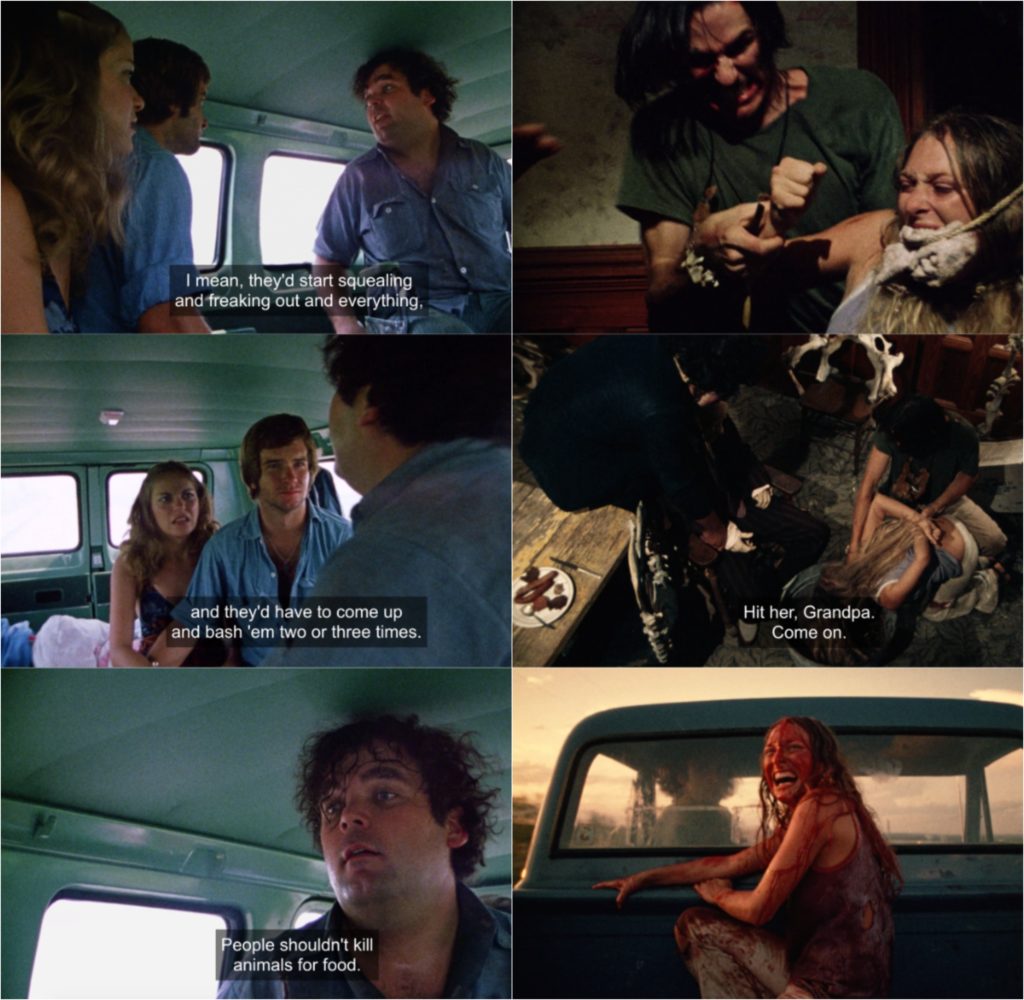
13. From this conversation we also learn that the hitchhiker and his family members have lost their jobs at the slaughterhouse as a result of innovation. The hitchhiker reveals that what Franklin assumed to be “more civilized” only appears that way to people who don’t know about the workers left behind by automation. The question that hangs in the air is whether the “whole family of Draculas” would be terrorizing people if they’d never lost the jobs that connected them to society.
14. For most of production, The Texas Chainsaw Massacre was titled Leatherface or Headcheese. When the hitchhiker describes how headcheese is made, Franklin tells Pam, “You’d probably like it if you didn’t know what was in it.” Sally responds to this conversation by asking Franklin to stop talking so she can go on enjoying eating meat without knowing the violent process by which a living animal becomes a meal. This mirrors a popular argument among people who advocate for veganism: the idea that removing ourselves from the “inhumane” aspects of preparing nonhuman animals for food appears to be civilized, but by continuing to eat meat we are simply outsourcing brutality so that it is out of sight, out of mind. The argument is: Our lives require barbaric work, whether we shield ourselves from it or not. Remember, this was written near the end of Vietnam, when most Americans were seeing the grisly reality of war for the very first time as it was broadcast on the nightly news. Never before had war been transmitted from the “battlefield” to the dinner table in such graphic visual detail.
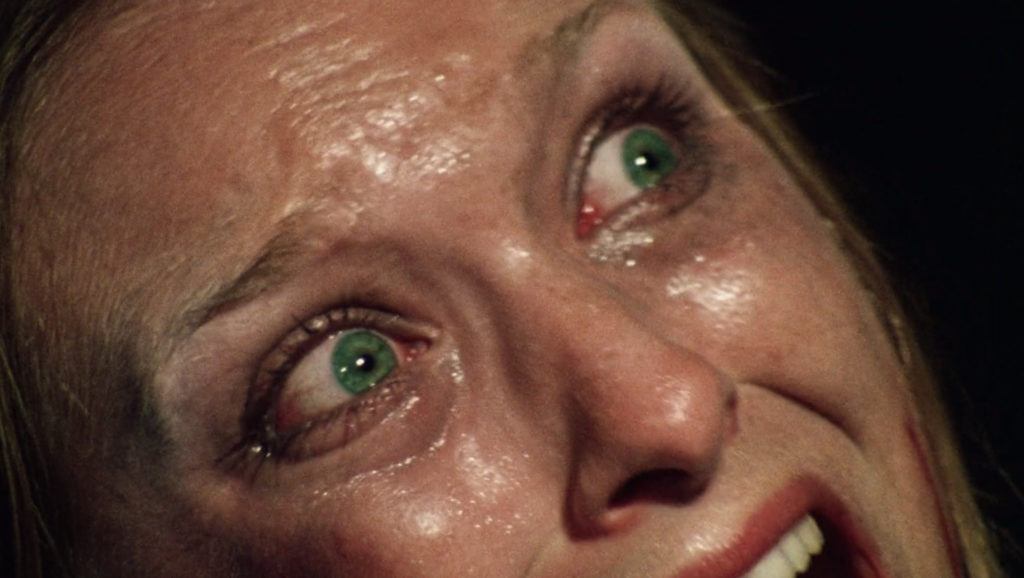
15. When Sally escapes Leatherface and runs to the “safety” of the nearby gas station, we see cooked meat for sale. One critic, Dawn Keetley, notes that the imagery in TCM’s dinner party scene includes many close-ups of Sally’s eyes. The symbolism here, Keetley says, is that Sally is seeing. The audience might be fine with war when we don’t see gruesome images of it on the news, and they might be fine eating meat when we don’t see what happens in the slaughterhouse, but Sally is no longer afforded this luxury. Sally now sees the barbaric origin of what is presented as civilized.
I gave up meat while making that film. In a way I thought the heart of the film was about meat; it’s about the chain of life and killing sentient beings, and it has cannibalism in it, although you have to come to that conclusion by yourself because it’s only implied. Guillermo del Toro also gave up eating meat after seeing that movie.
Tobe Hooper
16. The Texas Chainsaw Massacre was a big inspiration for John Carpenter’s Halloween (1978). Wes Craven has said his 1977 film The Hills Have Eyes was directly inspired by The Texas Chainsaw Massacre. Ridley Scott says he made Alien because of TCM. Rob Zombie says his films House of 1000 Corpses (2003) and The Devil’s Rejects (2005) were also inspired by TCM.
